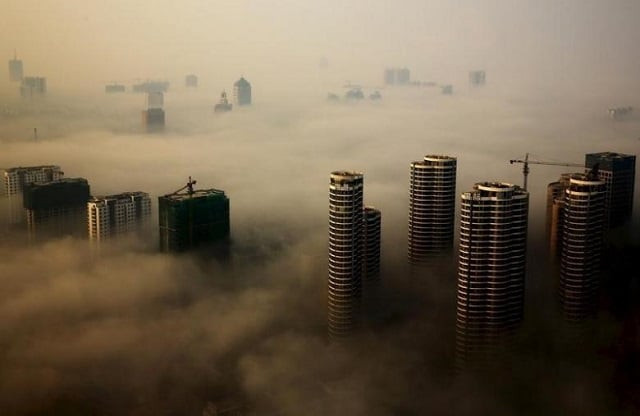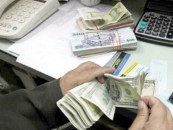China says more than 18,000 officials failed or performed badly in protecting environment
Entire cities have been blamed for causing spikes in air pollution

File Photo: Buildings in construction are seen among mist during a hazy day in Rizhao, Shandong province, China, October 18, 2015.
PHOTO: REUTERS
In one case, sewage from 150,000 residents in Jingdezhen in southern Jiangxi province was directly discharged into rivers due to a lack of treatment facilities. The vast majority of officials caught were local-ranking officials, said Liu Changgen, head of China's environmental inspection.
"In the next step, we will go through cases found during previous inspections and identify any higher-ranking officials for ill management," Liu, deputy director at the National Environmental Inspection Office, told reporters on Thursday.
Fresh ideas: HEC wants help from students to beat smog
Concerned about the level of local pollution following three decades of breakneck economic growth, Beijing dispatched four rounds of environment inspectors across the country from February 2016 to uncover violations of anti-pollution measures. In Shandong, one of China's most industrialised provinces, more than 10,000 companies were fined a total of 100 million yuan ($15 million) by inspectors in August-September.
Local government officials who turn a blind eye to offences in the hope of meeting economic growth goals were also targeted in the anti-pollution campaign. Entire cities have been blamed for causing spikes in air pollution, with the environment ministry attributing the problems to administrative failures.
"The names of the officials, their jobs and their violations will be reported up the chain of command, who will decide how the officials will be punished," Liu said, adding the inspections would continue. "We will not let the inspection become a passing gust of wind," Liu said. "It needs to keep blowing all the time."
Tackling smog
In a 143-page winter smog 'battleplan' unveiled in August, the ministry said it aims to cut average concentrations of airborne particles known as PM2.5 by over 15 per cent in the winter months in 28 cities in the northern, smog-prone provinces of Hebei, Shanxi, Shandong and Henan. It also vowed to cut average PM2.5 to below 60 micrograms per cubic metre in Beijing by the end of this year, which remain a lot higher than China's official air quality standard of 35 micrograms.
The World Health Organization recommends the level should be no more than 10 micrograms. Northern China has also embarked on an ambitious programme under which millions of households will switch from burning coal, a major contributor to air pollution in winter months, to natural gas for heating.



















COMMENTS
Comments are moderated and generally will be posted if they are on-topic and not abusive.
For more information, please see our Comments FAQ